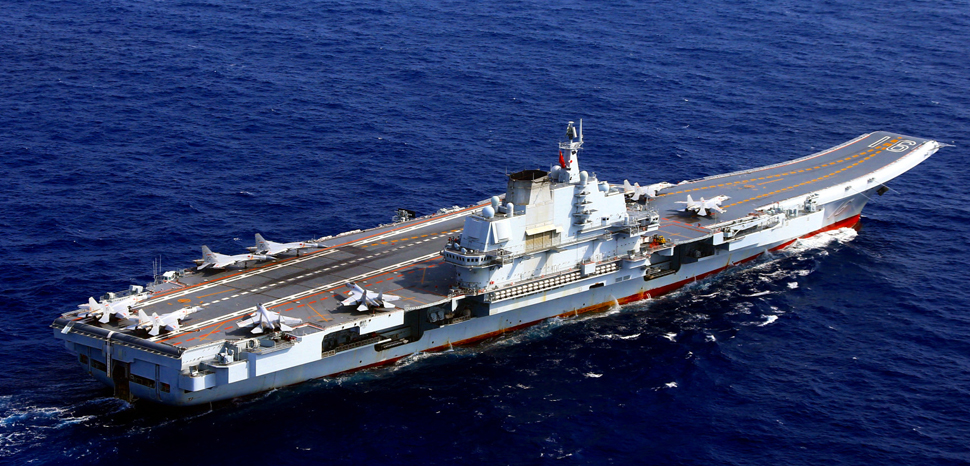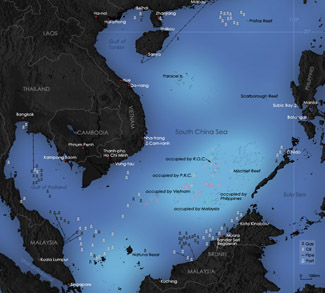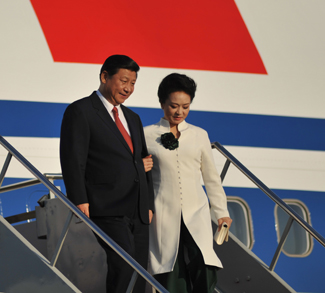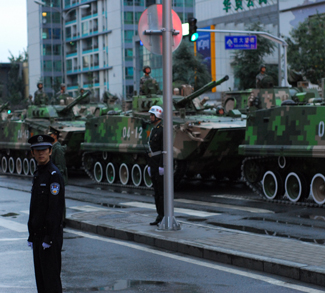Summary
One of the military highlights of the People’s Republic of China 70th anniversary celebrations was the unveiling of China’s first amphibious assault ship: the prosaically-named though well-equipped ‘Type 075.’ The ship goes far in remedying a longstanding capability gap for the PLA Navy – the ability to launch assaults along coastlines or islands – and it’s one that impacts the military calculus in a hypothetical invasion of Taiwan or disputed islands within the South China Sea.
Here’s what we know about the PLA Navy‘s Type 075 thus far:
Background
Gone are the days when amphibious assault consisted of small-scale landing craft deployed en masse ala the D-Day landings in World War II. Nowadays such assaults are conducted via helicopter shuttling of troops from a maritime platform to the shore alongside conventional landing craft. As such, modern amphibious assault crafts are essentially floating helicopter launch platforms (similar to aircraft carriers) with a capacity to launch various amphibious landing craft and armored vehicles; the bigger they are, the more helicopters, boats, vehicles, and troops they’re able to transport and launch.
The Type 075 is much like a Japanese Izumo-class helicopter carrier; it’s just substantially larger. In fact, with an estimated 40,000 tonnes of displacement, the Type 075 will be the third-largest such platform in the world, behind only the Wasp and America classes in the US Navy (41,000 and 45,000 tonnes respectively). It will nearly double the 26,000 tonnes of the Izumo class.
The vessel is believed to carry up to 30 helicopters (attack or transport), with four elevators on its deck. The Type 075 is also large enough to accommodate vertical take-off fighter jets and can substitute as a light aircraft carrier if and when the PLA Navy deploys jets with such a capacity (believed to be under development since around 2010).
The first Type 075 was built in record time, launching just five months after the first pictures emerged of its construction (there’s still no indication when it will enter into service). A second vessel is believed to be currently under construction. Once operational, the platform will be used with the PLA Navy’s smaller Type 071 vessels, each able to launch up to four helicopters. Altogether this will represent a significant maritime launch capacity; perhaps the best in the world behind the US Navy.
Impact
The deployment of the Type 075 represents a milestone in China’s power-projection capabilities, and it could be a game changer in a hypothetical military conflict, particularly against other regional militaries in Asia. Where aircraft carriers have become a symbol of military power and prestige, it’s actually the helicopter carriers like the Type 075 that offer some of the most valuable operational capabilities; for example: disaster relief, securing beachheads with boots on the ground, conducting anti-piracy operations, and launching minesweeping and anti-submarine helicopter platforms. This is why the US Navy operates nine such vessels around the world, and they often form the vanguard of military and humanitarian operations, seeing action in everything from disaster relief following Hurricane Katrina to deploying marines during the second Iraq war.
Absent a US intervention, the Type 075 gives the PLA Navy a marked advantage in the South China Sea. Rival claimants like the Philippines, Indonesia, Taiwan, and particularly Vietnam have all indirectly benefited from the PLA Navy’s lack of a blue water troop landing capacity. The advent of the Type 075 skews the military balance further in favor of China in many cases, allowing for the easier securing and occupation of disputed islands and reefs.
The Type 075 also has obvious applications in the event of an invasion of Taiwan. In fact, given the island’s centrality in PRC military planning, it’s surprising that it’s taken this long to develop a platform to unload large numbers of marines in a coastal setting. That the project seems to have been accelerated, with several more vessels in the pipeline, probably doesn’t sit well with some officials in Taipei.
However, the picture isn’t all rosy for the Type 075. Much like with the US aircraft carrier fleet, bigger isn’t always better – sometimes it just makes for an easier target. With the development of land-based short and mid-range hypersonic weapons platforms, case-in-point China’s anti-ship arsenal that is now a credible threat to the US Navy’s aircraft carriers, the Type 075 also represents a serious risk for Chinese military planners – the possibility that it could be sunk, along with all the human and military material within, in one fell swoop.




